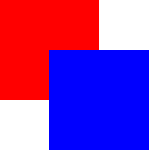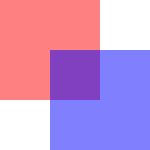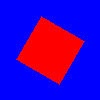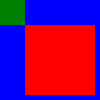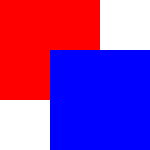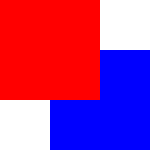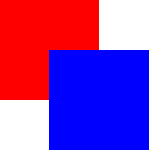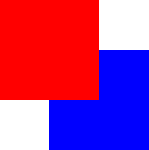QQuickItem Class
The QQuickItem class provides the most basic of all visual items in Qt Quick. More...
| Header: | #include <QQuickItem> |
| qmake: | QT += quick |
| Instantiated By: | Item |
| Inherits: | QObject and QQmlParserStatus. |
| Inherited By: |
Public Types
| class | ItemChangeData |
| class | UpdatePaintNodeData |
| enum | Flag { ItemClipsChildrenToShape, ItemAcceptsInputMethod, ItemIsFocusScope, ItemHasContents, ItemAcceptsDrops } |
| flags | Flags |
| enum | ItemChange { ItemChildAddedChange, ItemChildRemovedChange, ItemSceneChange, ItemVisibleHasChanged, ..., ItemRotationHasChanged } |
| enum | TransformOrigin { TopLeft, Top, TopRight, Left, ..., BottomRight } |
Properties
|
- 1 property inherited from QObject
Public Functions
| QQuickItem(QQuickItem * parent = 0) | |
| virtual | ~QQuickItem() |
| bool | acceptHoverEvents() const |
| Qt::MouseButtons | acceptedMouseButtons() const |
| bool | activeFocusOnTab() const |
| bool | antialiasing() const |
| qreal | baselineOffset() const |
| QQuickItem * | childAt(qreal x, qreal y) const |
| QList<QQuickItem *> | childItems() const |
| QRectF | childrenRect() |
| bool | clip() const |
| virtual bool | contains(const QPointF & point) const |
| QCursor | cursor() const |
| bool | filtersChildMouseEvents() const |
| Flags | flags() const |
| void | forceActiveFocus() |
| void | forceActiveFocus(Qt::FocusReason reason) |
| void | grabMouse() |
| QSharedPointer<QQuickItemGrabResult> | grabToImage(const QSize & targetSize = QSize()) |
| void | grabTouchPoints(const QVector<int> & ids) |
| bool | hasActiveFocus() const |
| bool | hasFocus() const |
| qreal | height() const |
| qreal | implicitHeight() const |
| qreal | implicitWidth() const |
| virtual QVariant | inputMethodQuery(Qt::InputMethodQuery query) const |
| bool | isEnabled() const |
| bool | isFocusScope() const |
| virtual bool | isTextureProvider() const |
| bool | isVisible() const |
| bool | keepMouseGrab() const |
| bool | keepTouchGrab() const |
| QPointF | mapFromItem(const QQuickItem * item, const QPointF & point) const |
| QPointF | mapFromScene(const QPointF & point) const |
| QRectF | mapRectFromItem(const QQuickItem * item, const QRectF & rect) const |
| QRectF | mapRectFromScene(const QRectF & rect) const |
| QRectF | mapRectToItem(const QQuickItem * item, const QRectF & rect) const |
| QRectF | mapRectToScene(const QRectF & rect) const |
| QPointF | mapToItem(const QQuickItem * item, const QPointF & point) const |
| QPointF | mapToScene(const QPointF & point) const |
| QQuickItem * | nextItemInFocusChain(bool forward = true) |
| qreal | opacity() const |
| QQuickItem * | parentItem() const |
| void | polish() |
| void | resetAntialiasing() |
| void | resetHeight() |
| void | resetWidth() |
| qreal | rotation() const |
| qreal | scale() const |
| QQuickItem * | scopedFocusItem() const |
| void | setAcceptHoverEvents(bool enabled) |
| void | setAcceptedMouseButtons(Qt::MouseButtons buttons) |
| void | setActiveFocusOnTab(bool) |
| void | setAntialiasing(bool) |
| void | setBaselineOffset(qreal) |
| void | setClip(bool) |
| void | setCursor(const QCursor & cursor) |
| void | setEnabled(bool) |
| void | setFiltersChildMouseEvents(bool filter) |
| void | setFlag(Flag flag, bool enabled = true) |
| void | setFlags(Flags flags) |
| void | setFocus(bool) |
| void | setFocus(bool focus, Qt::FocusReason reason) |
| void | setHeight(qreal) |
| void | setImplicitHeight(qreal) |
| void | setImplicitWidth(qreal) |
| void | setKeepMouseGrab(bool keep) |
| void | setKeepTouchGrab(bool keep) |
| void | setOpacity(qreal) |
| void | setParentItem(QQuickItem * parent) |
| void | setRotation(qreal) |
| void | setScale(qreal) |
| void | setSmooth(bool) |
| void | setState(const QString &) |
| void | setTransformOrigin(TransformOrigin) |
| void | setVisible(bool) |
| void | setWidth(qreal) |
| void | setX(qreal) |
| void | setY(qreal) |
| void | setZ(qreal) |
| bool | smooth() const |
| void | stackAfter(const QQuickItem * sibling) |
| void | stackBefore(const QQuickItem * sibling) |
| QString | state() const |
| virtual QSGTextureProvider * | textureProvider() const |
| TransformOrigin | transformOrigin() const |
| void | ungrabMouse() |
| void | ungrabTouchPoints() |
| void | unsetCursor() |
| qreal | width() const |
| QQuickWindow * | window() const |
| qreal | x() const |
| qreal | y() const |
| qreal | z() const |
- 31 public functions inherited from QObject
- 2 public functions inherited from QQmlParserStatus
Public Slots
| void | update() |
- 1 public slot inherited from QObject
Signals
| void | windowChanged(QQuickWindow * window) |
- 2 signals inherited from QObject
Protected Functions
| virtual bool | childMouseEventFilter(QQuickItem * item, QEvent * event) |
| virtual void | dragEnterEvent(QDragEnterEvent * event) |
| virtual void | dragLeaveEvent(QDragLeaveEvent * event) |
| virtual void | dragMoveEvent(QDragMoveEvent * event) |
| virtual void | dropEvent(QDropEvent * event) |
| virtual void | focusInEvent(QFocusEvent * event) |
| virtual void | focusOutEvent(QFocusEvent * event) |
| virtual void | geometryChanged(const QRectF & newGeometry, const QRectF & oldGeometry) |
| bool | heightValid() const |
| virtual void | hoverEnterEvent(QHoverEvent * event) |
| virtual void | hoverLeaveEvent(QHoverEvent * event) |
| virtual void | hoverMoveEvent(QHoverEvent * event) |
| virtual void | inputMethodEvent(QInputMethodEvent * event) |
| bool | isComponentComplete() const |
| virtual void | itemChange(ItemChange change, const ItemChangeData & value) |
| virtual void | keyPressEvent(QKeyEvent * event) |
| virtual void | keyReleaseEvent(QKeyEvent * event) |
| virtual void | mouseDoubleClickEvent(QMouseEvent * event) |
| virtual void | mouseMoveEvent(QMouseEvent * event) |
| virtual void | mousePressEvent(QMouseEvent * event) |
| virtual void | mouseReleaseEvent(QMouseEvent * event) |
| virtual void | mouseUngrabEvent() |
| virtual void | releaseResources() |
| virtual void | touchEvent(QTouchEvent * event) |
| virtual void | touchUngrabEvent() |
| void | updateInputMethod(Qt::InputMethodQueries queries = Qt::ImQueryInput) |
| virtual QSGNode * | updatePaintNode(QSGNode * oldNode, UpdatePaintNodeData * updatePaintNodeData) |
| virtual void | updatePolish() |
| virtual void | wheelEvent(QWheelEvent * event) |
| bool | widthValid() const |
Reimplemented Protected Functions
| virtual void | classBegin() |
| virtual void | componentComplete() |
| virtual bool | event(QEvent * ev) |
- 9 protected functions inherited from QObject
Additional Inherited Members
- 11 static public members inherited from QObject
Detailed Description
The QQuickItem class provides the most basic of all visual items in Qt Quick.
All visual items in Qt Quick inherit from QQuickItem. Although a QQuickItem instance has no visual appearance, it defines all the attributes that are common across visual items, such as x and y position, width and height, anchoring and key handling support.
You can subclass QQuickItem to provide your own custom visual item that inherits these features.
Custom Scene Graph Items
All visual QML items are rendered using the scene graph, a low-level, high-performance rendering stack, closely tied to OpenGL. It is possible for subclasses of QQuickItem to add their own custom content into the scene graph by setting the QQuickItem::ItemHasContents flag and reimplementing the QQuickItem::updatePaintNode() function.
Warning: It is crucial that OpenGL operations and interaction with the scene graph happens exclusively on the rendering thread, primarily during the updatePaintNode() call. The best rule of thumb is to only use classes with the "QSG" prefix inside the QQuickItem::updatePaintNode() function.
Note: All classes with QSG prefix should be used solely on the scene graph's rendering thread. See Scene Graph and Rendering for more information.
Graphics Resource Handling
The preferred way to handle cleanup of graphics resources used in the scene graph, is to rely on the automatic cleanup of nodes. A QSGNode returned from QQuickItem::updatePaintNode() is automatically deleted on the right thread at the right time. Trees of QSGNode instances are managed through the use of QSGNode::OwnedByParent, which is set by default. So, for the majority of custom scene graph items, no extra work will be required.
Implementations that store graphics resources outside the node tree, such as an item implementing QQuickItem::textureProvider(), will need to take care in cleaning it up correctly depending on how the item is used in QML. The situations to handle are:
- The scene graph is invalidated; This can happen, for instance, if the window is hidden using QQuickWindow::hide(). If the item class implements a
slotnamedinvalidateSceneGraph(), this slot will be called on the rendering thread while the GUI thread is blocked. This is equivalent to connecting to QQuickWindow::sceneGraphInvalidated(). The OpenGL context of this item's window will be bound when this slot is called. The only exception is if the native OpenGL has been destroyed outside Qt's control, for instance throughEGL_CONTEXT_LOST. - The item is removed from the scene; If an item is taken out of the scene, for instance because it's parent was set to
nullor an item in another window, the QQuickItem::releaseResources() will be called on the GUI thread. QQuickWindow::scheduleRenderJob() should be used to schedule cleanup of rendering resources. - The item is deleted; When the destructor if an item runs, it should delete any graphics resources it has. If neither of the two conditions above were already met, the item will be part of a window and it is possible to use QQuickWindow::scheduleRenderJob() to have them cleaned up. If an implementation ignores the call to QQuickItem::releaseResources(), the item will in many cases no longer have access to a QQuickWindow and thus no means of scheduling cleanup.
When scheduling cleanup of graphics resources using QQuickWindow::scheduleRenderJob(), one should use either QQuickWindow::BeforeSynchronizingStage or QQuickWindow::AfterSynchronizingStage. The synchronization stage is where the scene graph is changed as a result of changes to the QML tree. If cleanup is scheduled at any other time, it may result in other parts of the scene graph referencing the newly deleted objects as these parts have not been updated.
Note: Use of QObject::deleteLater() to clean up graphics resources is not recommended as this will run at an arbitrary time and it is unknown if there will be an OpenGL context bound when the deletion takes place.
Custom QPainter Items
The QQuickItem provides a subclass, QQuickPaintedItem, which allows the users to render content using QPainter.
Warning: Using QQuickPaintedItem uses an indirect 2D surface to render its content, either using software rasterization or using an OpenGL framebuffer object (FBO), so the rendering is a two-step operation. First rasterize the surface, then draw the surface. Using scene graph API directly is always significantly faster.
Behavior Animations
If your Item uses the Behavior type to define animations for property changes, you should always use either QObject::setProperty(), QQmlProperty(), or QMetaProperty::write() when you need to modify those properties from C++. This ensures that the QML engine knows about the property change. Otherwise, the engine won't be able to carry out your requested animation. For example, if you call setPosition() directly, any behavior that reacts to changes in the x or y properties will not take effect, as you are bypassing Qt's meta-object system. Note that these functions incur a slight performance penalty. For more details, see Accessing Members of a QML Object Type from C++.
See also QQuickWindow and QQuickPaintedItem.
Member Type Documentation
enum QQuickItem::Flag
flags QQuickItem::Flags
This enum type is used to specify various item properties.
| Constant | Value | Description |
|---|---|---|
QQuickItem::ItemClipsChildrenToShape | 0x01 | Indicates this item should visually clip its children so that they are rendered only within the boundaries of this item. |
QQuickItem::ItemAcceptsInputMethod | 0x02 | Indicates the item supports text input methods. |
QQuickItem::ItemIsFocusScope | 0x04 | Indicates the item is a focus scope. See Keyboard Focus in Qt Quick for more information. |
QQuickItem::ItemHasContents | 0x08 | Indicates the item has visual content and should be rendered by the scene graph. |
QQuickItem::ItemAcceptsDrops | 0x10 | Indicates the item accepts drag and drop events. |
The Flags type is a typedef for QFlags<Flag>. It stores an OR combination of Flag values.
See also setFlag(), setFlags(), and flags().
enum QQuickItem::ItemChange
Used in conjunction with QQuickItem::itemChange() to notify the item about certain types of changes.
| Constant | Value | Description |
|---|---|---|
QQuickItem::ItemChildAddedChange | 0 | A child was added. ItemChangeData::item contains the added child. |
QQuickItem::ItemChildRemovedChange | 1 | A child was removed. ItemChangeData::item contains the removed child. |
QQuickItem::ItemSceneChange | 2 | The item was added to or removed from a scene. The QQuickWindow rendering the scene is specified in using ItemChangeData::window. The window parameter is null when the item is removed from a scene. |
QQuickItem::ItemVisibleHasChanged | 3 | The item's visibility has changed. ItemChangeData::boolValue contains the new visibility. |
QQuickItem::ItemParentHasChanged | 4 | The item's parent has changed. ItemChangeData::item contains the new parent. |
QQuickItem::ItemOpacityHasChanged | 5 | The item's opacity has changed. ItemChangeData::realValue contains the new opacity. |
QQuickItem::ItemActiveFocusHasChanged | 6 | The item's focus has changed. ItemChangeData::boolValue contains whether the item has focus or not. |
QQuickItem::ItemRotationHasChanged | 7 | The item's rotation has changed. ItemChangeData::realValue contains the new rotation. |
enum QQuickItem::TransformOrigin
Controls the point about which simple transforms like scale apply.
| Constant | Value | Description |
|---|---|---|
QQuickItem::TopLeft | 0 | The top-left corner of the item. |
QQuickItem::Top | 1 | The center point of the top of the item. |
QQuickItem::TopRight | 2 | The top-right corner of the item. |
QQuickItem::Left | 3 | The left most point of the vertical middle. |
QQuickItem::Center | 4 | The center of the item. |
QQuickItem::Right | 5 | The right most point of the vertical middle. |
QQuickItem::BottomLeft | 6 | The bottom-left corner of the item. |
QQuickItem::Bottom | 7 | The center point of the bottom of the item. |
QQuickItem::BottomRight | 8 | The bottom-right corner of the item. |
See also transformOrigin() and setTransformOrigin().
Property Documentation
activeFocus : const bool
This read-only property indicates whether the item has active focus.
If activeFocus is true, either this item is the one that currently receives keyboard input, or it is a FocusScope ancestor of the item that currently receives keyboard input.
Usually, activeFocus is gained by setting focus on an item and its enclosing FocusScope objects. In the following example, the input and focusScope objects will have active focus, while the root rectangle object will not.
import QtQuick 2.0 Rectangle { width: 100; height: 100 FocusScope { focus: true TextInput { id: input focus: true } } }
Access functions:
| bool | hasActiveFocus() const |
See also focus and Keyboard Focus in Qt Quick.
activeFocusOnTab : bool
This property holds whether the item wants to be in tab focus chain. By default this is set to false.
Access functions:
| bool | activeFocusOnTab() const |
| void | setActiveFocusOnTab(bool) |
antialiasing : bool
This property specifies whether the item is antialiased or not.
Used by visual elements to decide if the item should use antialiasing or not. In some cases items with antialiasing require more memory and are potentially slower to render (see Antialiasing for more details).
The default is false, but may be overridden by derived elements.
Access functions:
| bool | antialiasing() const |
| void | setAntialiasing(bool) |
| void | resetAntialiasing() |
baselineOffset : qreal
Specifies the position of the item's baseline in local coordinates.
The baseline of a Text item is the imaginary line on which the text sits. Controls containing text usually set their baseline to the baseline of their text.
For non-text items, a default baseline offset of 0 is used.
Access functions:
| qreal | baselineOffset() const |
| void | setBaselineOffset(qreal) |
childrenRect : const QRectF
This property holds the collective position and size of the item's children.
This property is useful if you need to access the collective geometry of an item's children in order to correctly size the item.
Access functions:
| QRectF | childrenRect() |
clip : bool
This property holds whether clipping is enabled. The default clip value is false.
If clipping is enabled, an item will clip its own painting, as well as the painting of its children, to its bounding rectangle. If you set clipping during an item's paint operation, remember to re-set it to prevent clipping the rest of your scene.
Access functions:
| bool | clip() const |
| void | setClip(bool) |
enabled : bool
This property holds whether the item receives mouse and keyboard events. By default this is true.
Setting this property directly affects the enabled value of child items. When set to false, the enabled values of all child items also become false. When set to true, the enabled values of child items are returned to true, unless they have explicitly been set to false.
Setting this property to false automatically causes activeFocus to be set to false, and this item will longer receive keyboard events.
Access functions:
| bool | isEnabled() const |
| void | setEnabled(bool) |
See also visible.
focus : bool
This property holds whether the item has focus within the enclosing FocusScope. If true, this item will gain active focus when the enclosing FocusScope gains active focus.
In the following example, input will be given active focus when scope gains active focus:
import QtQuick 2.0 Rectangle { width: 100; height: 100 FocusScope { id: scope TextInput { id: input focus: true } } }
For the purposes of this property, the scene as a whole is assumed to act like a focus scope. On a practical level, that means the following QML will give active focus to input on startup.
Rectangle { width: 100; height: 100 TextInput { id: input focus: true } }
Access functions:
| bool | hasFocus() const |
| void | setFocus(bool) |
| void | setFocus(bool focus, Qt::FocusReason reason) |
See also activeFocus and Keyboard Focus in Qt Quick.
height : qreal
This property holds the height of this item.
Access functions:
| qreal | height() const |
| void | setHeight(qreal) |
| void | resetHeight() |
implicitHeight : qreal
Defines the natural width or height of the Item if no width or height is specified.
The default implicit size for most items is 0x0, however some items have an inherent implicit size which cannot be overridden, e.g. Image, Text.
Setting the implicit size is useful for defining components that have a preferred size based on their content, for example:
// Label.qml import QtQuick 2.0 Item { property alias icon: image.source property alias label: text.text implicitWidth: text.implicitWidth + image.implicitWidth implicitHeight: Math.max(text.implicitHeight, image.implicitHeight) Image { id: image } Text { id: text wrapMode: Text.Wrap anchors.left: image.right; anchors.right: parent.right anchors.verticalCenter: parent.verticalCenter } }
Note: using implicitWidth of Text or TextEdit and setting the width explicitly incurs a performance penalty as the text must be laid out twice.
Access functions:
| qreal | implicitHeight() const |
| void | setImplicitHeight(qreal) |
implicitWidth : qreal
Defines the natural width or height of the Item if no width or height is specified.
The default implicit size for most items is 0x0, however some items have an inherent implicit size which cannot be overridden, e.g. Image, Text.
Setting the implicit size is useful for defining components that have a preferred size based on their content, for example:
// Label.qml import QtQuick 2.0 Item { property alias icon: image.source property alias label: text.text implicitWidth: text.implicitWidth + image.implicitWidth implicitHeight: Math.max(text.implicitHeight, image.implicitHeight) Image { id: image } Text { id: text wrapMode: Text.Wrap anchors.left: image.right; anchors.right: parent.right anchors.verticalCenter: parent.verticalCenter } }
Note: using implicitWidth of Text or TextEdit and setting the width explicitly incurs a performance penalty as the text must be laid out twice.
Access functions:
| qreal | implicitWidth() const |
| void | setImplicitWidth(qreal) |
opacity : qreal
This property holds the opacity of the item. Opacity is specified as a number between 0.0 (fully transparent) and 1.0 (fully opaque). The default value is 1.0.
When this property is set, the specified opacity is also applied individually to child items. This may have an unintended effect in some circumstances. For example in the second set of rectangles below, the red rectangle has specified an opacity of 0.5, which affects the opacity of its blue child rectangle even though the child has not specified an opacity.
Values outside the range of 0 to 1 will be clamped.
| Item { Rectangle { color: "red" width: 100; height: 100 Rectangle { color: "blue" x: 50; y: 50; width: 100; height: 100 } } } |
| Item { Rectangle { opacity: 0.5 color: "red" width: 100; height: 100 Rectangle { color: "blue" x: 50; y: 50; width: 100; height: 100 } } } |
Changing an item's opacity does not affect whether the item receives user input events. (In contrast, setting visible property to false stops mouse events, and setting the enabled property to false stops mouse and keyboard events, and also removes active focus from the item.)
Access functions:
| qreal | opacity() const |
| void | setOpacity(qreal) |
See also visible.
parent : QQuickItem *
This property holds the visual parent of the item.
Note: The concept of the visual parent differs from that of the QObject parent. An item's visual parent may not necessarily be the same as its object parent. See Concepts - Visual Parent in Qt Quick for more details.
Access functions:
| QQuickItem * | parentItem() const |
| void | setParentItem(QQuickItem * parent) |
rotation : qreal
This property holds the rotation of the item in degrees clockwise around its transformOrigin.
The default value is 0 degrees (that is, no rotation).
| Rectangle { color: "blue" width: 100; height: 100 Rectangle { color: "red" x: 25; y: 25; width: 50; height: 50 rotation: 30 } } |
Access functions:
| qreal | rotation() const |
| void | setRotation(qreal) |
See also transform and Rotation.
scale : qreal
This property holds the scale factor for this item.
A scale of less than 1.0 causes the item to be rendered at a smaller size, and a scale greater than 1.0 renders the item at a larger size. A negative scale causes the item to be mirrored when rendered.
The default value is 1.0.
Scaling is applied from the transformOrigin.
| import QtQuick 2.0 Rectangle { color: "blue" width: 100; height: 100 Rectangle { color: "green" width: 25; height: 25 } Rectangle { color: "red" x: 25; y: 25; width: 50; height: 50 scale: 1.4 } } |
Access functions:
| qreal | scale() const |
| void | setScale(qreal) |
See also transform and Scale.
smooth : bool
This property specifies whether the item is smoothed or not.
Primarily used in image based items to decide if the item should use smooth sampling or not. Smooth sampling is performed using linear interpolation, while non-smooth is performed using nearest neighbor.
In Qt Quick 2.0, this property has minimal impact on performance.
By default is true.
Access functions:
| bool | smooth() const |
| void | setSmooth(bool) |
state : QString
This property holds the name of the current state of the item.
If the item is in its default state, that is, no explicit state has been set, then this property holds an empty string. Likewise, you can return an item to its default state by setting this property to an empty string.
Access functions:
| QString | state() const |
| void | setState(const QString &) |
See also Qt Quick States.
transformOrigin : TransformOrigin
This property holds the origin point around which scale and rotation transform.
Nine transform origins are available, as shown in the image below. The default transform origin is Item.Center.
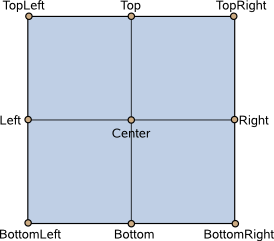
Access functions:
| TransformOrigin | transformOrigin() const |
| void | setTransformOrigin(TransformOrigin) |
visible : bool
This property holds whether the item is visible. By default this is true.
Setting this property directly affects the visible value of child items. When set to false, the visible values of all child items also become false. When set to true, the visible values of child items are returned to true, unless they have explicitly been set to false.
(Because of this flow-on behavior, using the visible property may not have the intended effect if a property binding should only respond to explicit property changes. In such cases it may be better to use the opacity property instead.)
If this property is set to false, the item will no longer receive mouse events, but will continue to receive key events and will retain the keyboard focus if it has been set. (In contrast, setting the enabled property to false stops both mouse and keyboard events, and also removes focus from the item.)
Note: This property's value is only affected by changes to this property or the parent's visible property. It does not change, for example, if this item moves off-screen, or if the opacity changes to 0.
Access functions:
| bool | isVisible() const |
| void | setVisible(bool) |
width : qreal
This property holds the width of this item.
Access functions:
| qreal | width() const |
| void | setWidth(qreal) |
| void | resetWidth() |
x : qreal
Defines the item's x position relative to its parent.
Access functions:
| qreal | x() const |
| void | setX(qreal) |
y : qreal
Defines the item's y position relative to its parent.
Access functions:
| qreal | y() const |
| void | setY(qreal) |
z : qreal
Sets the stacking order of sibling items. By default the stacking order is 0.
Items with a higher stacking value are drawn on top of siblings with a lower stacking order. Items with the same stacking value are drawn bottom up in the order they appear. Items with a negative stacking value are drawn under their parent's content.
The following example shows the various effects of stacking order.
| Same z - later children above earlier children:Item { Rectangle { color: "red" width: 100; height: 100 } Rectangle { color: "blue" x: 50; y: 50; width: 100; height: 100 } } |
| Higher z on top:Item { Rectangle { z: 1 color: "red" width: 100; height: 100 } Rectangle { color: "blue" x: 50; y: 50; width: 100; height: 100 } } |
| Same z - children above parents:Item { Rectangle { color: "red" width: 100; height: 100 Rectangle { color: "blue" x: 50; y: 50; width: 100; height: 100 } } } |
| Lower z below:Item { Rectangle { color: "red" width: 100; height: 100 Rectangle { z: -1 color: "blue" x: 50; y: 50; width: 100; height: 100 } } } |
Access functions:
| qreal | z() const |
| void | setZ(qreal) |
Member Function Documentation
QQuickItem::QQuickItem(QQuickItem * parent = 0)
Constructs a QQuickItem with the given parent.
[virtual] QQuickItem::~QQuickItem()
Destroys the QQuickItem.
bool QQuickItem::acceptHoverEvents() const
Returns whether hover events are accepted by this item.
The default value is false.
If this is false, then the item will not receive any hover events through the hoverEnterEvent(), hoverMoveEvent() and hoverLeaveEvent() functions.
See also setAcceptHoverEvents().
Qt::MouseButtons QQuickItem::acceptedMouseButtons() const
Returns the mouse buttons accepted by this item.
The default value is Qt::NoButton; that is, no mouse buttons are accepted.
If an item does not accept the mouse button for a particular mouse event, the mouse event will not be delivered to the item and will be delivered to the next item in the item hierarchy instead.
See also setAcceptedMouseButtons().
QQuickItem * QQuickItem::childAt(qreal x, qreal y) const
Returns the first visible child item found at point (x, y) within the coordinate system of this item.
Returns 0 if there is no such item.
QList<QQuickItem *> QQuickItem::childItems() const
Returns the children of this item.
[virtual protected] bool QQuickItem::childMouseEventFilter(QQuickItem * item, QEvent * event)
Reimplement this method to filter the mouse events that are received by this item's children.
This method will only be called if filtersChildMouseEvents() is true.
Return true if the specified event should not be passed onto the specified child item, and false otherwise.
See also setFiltersChildMouseEvents().
[virtual protected] void QQuickItem::classBegin()
Reimplemented from QQmlParserStatus::classBegin().
Derived classes should call the base class method before adding their own action to perform at classBegin.
[virtual protected] void QQuickItem::componentComplete()
Reimplemented from QQmlParserStatus::componentComplete().
Derived classes should call the base class method before adding their own actions to perform at componentComplete.
[virtual] bool QQuickItem::contains(const QPointF & point) const
Returns true if this item contains point, which is in local coordinates; returns false otherwise.
This function can be overwritten in order to handle point collisions in items with custom shapes. The default implementation checks if the point is inside the item's bounding rect.
Note that this method is generally used to check whether the item is under the mouse cursor, and for that reason, the implementation of this function should be as light-weight as possible.
QCursor QQuickItem::cursor() const
Returns the cursor shape for this item.
The mouse cursor will assume this shape when it is over this item, unless an override cursor is set. See the list of predefined cursor objects for a range of useful shapes.
If no cursor shape has been set this returns a cursor with the Qt::ArrowCursor shape, however another cursor shape may be displayed if an overlapping item has a valid cursor.
See also setCursor() and unsetCursor().
[virtual protected] void QQuickItem::dragEnterEvent(QDragEnterEvent * event)
This event handler can be reimplemented in a subclass to receive drag-enter events for an item. The event information is provided by the event parameter.
Drag and drop events are only provided if the ItemAcceptsDrops flag has been set for this item.
See also Drag and Drag and Drop.
[virtual protected] void QQuickItem::dragLeaveEvent(QDragLeaveEvent * event)
This event handler can be reimplemented in a subclass to receive drag-leave events for an item. The event information is provided by the event parameter.
Drag and drop events are only provided if the ItemAcceptsDrops flag has been set for this item.
See also Drag and Drag and Drop.
[virtual protected] void QQuickItem::dragMoveEvent(QDragMoveEvent * event)
This event handler can be reimplemented in a subclass to receive drag-move events for an item. The event information is provided by the event parameter.
Drag and drop events are only provided if the ItemAcceptsDrops flag has been set for this item.
See also Drag and Drag and Drop.
[virtual protected] void QQuickItem::dropEvent(QDropEvent * event)
This event handler can be reimplemented in a subclass to receive drop events for an item. The event information is provided by the event parameter.
Drag and drop events are only provided if the ItemAcceptsDrops flag has been set for this item.
See also Drag and Drag and Drop.
[virtual protected] bool QQuickItem::event(QEvent * ev)
Reimplemented from QObject::event().
bool QQuickItem::filtersChildMouseEvents() const
Returns whether mouse events of this item's children should be filtered through this item.
See also setFiltersChildMouseEvents() and childMouseEventFilter().
Flags QQuickItem::flags() const
Returns the item flags for this item.
See also setFlags() and setFlag().
[virtual protected] void QQuickItem::focusInEvent(QFocusEvent * event)
This event handler can be reimplemented in a subclass to receive focus-in events for an item. The event information is provided by the event parameter.
[virtual protected] void QQuickItem::focusOutEvent(QFocusEvent * event)
This event handler can be reimplemented in a subclass to receive focus-out events for an item. The event information is provided by the event parameter.
void QQuickItem::forceActiveFocus()
void QQuickItem::forceActiveFocus(Qt::FocusReason reason)
[virtual protected] void QQuickItem::geometryChanged(const QRectF & newGeometry, const QRectF & oldGeometry)
This function is called to handle this item's changes in geometry from oldGeometry to newGeometry. If the two geometries are the same, it doesn't do anything.
Derived classes must call the base class method within their implementation.
void QQuickItem::grabMouse()
Grabs the mouse input.
This item will receive all mouse events until ungrabMouse() is called.
Warning: This function should be used with caution.
QSharedPointer<QQuickItemGrabResult> QQuickItem::grabToImage(const QSize & targetSize = QSize())
Grabs the item into an in-memory image.
The grab happens asynchronously and the signal QQuickItemGrabResult::ready() is emitted when the grab has been completed.
Use targetSize to specify the size of the target image. By default, the result will have the same size as item.
If the grab could not be initiated, the function returns a null.
Note: This function will render the item to an offscreen surface and copy that surface from the GPU's memory into the CPU's memory, which can be quite costly. For "live" preview, use layers or ShaderEffectSource.
See also QQuickWindow::grabWindow().
void QQuickItem::grabTouchPoints(const QVector<int> & ids)
Grabs the touch points specified by ids.
These touch points will be owned by the item until they are released. Alternatively, the grab can be stolen by a filtering item like Flickable. Use setKeepTouchGrab() to prevent the grab from being stolen.
See also ungrabTouchPoints() and setKeepTouchGrab().
[protected] bool QQuickItem::heightValid() const
Returns whether the height property has been set explicitly.
[virtual protected] void QQuickItem::hoverEnterEvent(QHoverEvent * event)
This event handler can be reimplemented in a subclass to receive hover-enter events for an item. The event information is provided by the event parameter.
Hover events are only provided if acceptHoverEvents() is true.
[virtual protected] void QQuickItem::hoverLeaveEvent(QHoverEvent * event)
This event handler can be reimplemented in a subclass to receive hover-leave events for an item. The event information is provided by the event parameter.
Hover events are only provided if acceptHoverEvents() is true.
[virtual protected] void QQuickItem::hoverMoveEvent(QHoverEvent * event)
This event handler can be reimplemented in a subclass to receive hover-move events for an item. The event information is provided by the event parameter.
Hover events are only provided if acceptHoverEvents() is true.
[virtual protected] void QQuickItem::inputMethodEvent(QInputMethodEvent * event)
This event handler can be reimplemented in a subclass to receive input method events for an item. The event information is provided by the event parameter.
[virtual] QVariant QQuickItem::inputMethodQuery(Qt::InputMethodQuery query) const
This method is only relevant for input items.
If this item is an input item, this method should be reimplemented to return the relevant input method flags for the given query.
See also QWidget::inputMethodQuery().
[protected] bool QQuickItem::isComponentComplete() const
Returns true if construction of the QML component is complete; otherwise returns false.
It is often desirable to delay some processing until the component is completed.
See also componentComplete().
bool QQuickItem::isFocusScope() const
Returns true if this item is a focus scope, and false otherwise.
[virtual] bool QQuickItem::isTextureProvider() const
Returns true if this item is a texture provider. The default implementation returns false.
This function can be called from any thread.
[virtual protected] void QQuickItem::itemChange(ItemChange change, const ItemChangeData & value)
Called when change occurs for this item.
value contains extra information relating to the change, when applicable.
If you re-implement this method in a subclass, be sure to call
QQuickItem::itemChange(change, value);
typically at the end of your implementation, to ensure the windowChanged() signal will be emitted.
bool QQuickItem::keepMouseGrab() const
Returns whether mouse input should exclusively remain with this item.
See also setKeepMouseGrab().
bool QQuickItem::keepTouchGrab() const
Returns whether the touch points grabbed by this item should exclusively remain with this item.
See also setKeepTouchGrab() and keepMouseGrab().
[virtual protected] void QQuickItem::keyPressEvent(QKeyEvent * event)
This event handler can be reimplemented in a subclass to receive key press events for an item. The event information is provided by the event parameter.
[virtual protected] void QQuickItem::keyReleaseEvent(QKeyEvent * event)
This event handler can be reimplemented in a subclass to receive key release events for an item. The event information is provided by the event parameter.
QPointF QQuickItem::mapFromItem(const QQuickItem * item, const QPointF & point) const
Maps the given point in item's coordinate system to the equivalent point within this item's coordinate system, and returns the mapped coordinate.
If item is 0, this maps point from the coordinate system of the scene.
See also Concepts - Visual Coordinates in Qt Quick.
QPointF QQuickItem::mapFromScene(const QPointF & point) const
Maps the given point in the scene's coordinate system to the equivalent point within this item's coordinate system, and returns the mapped coordinate.
See also Concepts - Visual Coordinates in Qt Quick.
QRectF QQuickItem::mapRectFromItem(const QQuickItem * item, const QRectF & rect) const
Maps the given rect in item's coordinate system to the equivalent rectangular area within this item's coordinate system, and returns the mapped rectangle value.
If item is 0, this maps rect from the coordinate system of the scene.
See also Concepts - Visual Coordinates in Qt Quick.
QRectF QQuickItem::mapRectFromScene(const QRectF & rect) const
Maps the given rect in the scene's coordinate system to the equivalent rectangular area within this item's coordinate system, and returns the mapped rectangle value.
See also Concepts - Visual Coordinates in Qt Quick.
QRectF QQuickItem::mapRectToItem(const QQuickItem * item, const QRectF & rect) const
Maps the given rect in this item's coordinate system to the equivalent rectangular area within item's coordinate system, and returns the mapped rectangle value.
If item is 0, this maps rect to the coordinate system of the scene.
See also Concepts - Visual Coordinates in Qt Quick.
QRectF QQuickItem::mapRectToScene(const QRectF & rect) const
Maps the given rect in this item's coordinate system to the equivalent rectangular area within the scene's coordinate system, and returns the mapped rectangle value.
See also Concepts - Visual Coordinates in Qt Quick.
QPointF QQuickItem::mapToItem(const QQuickItem * item, const QPointF & point) const
Maps the given point in this item's coordinate system to the equivalent point within item's coordinate system, and returns the mapped coordinate.
If item is 0, this maps point to the coordinate system of the scene.
See also Concepts - Visual Coordinates in Qt Quick.
QPointF QQuickItem::mapToScene(const QPointF & point) const
Maps the given point in this item's coordinate system to the equivalent point within the scene's coordinate system, and returns the mapped coordinate.
See also Concepts - Visual Coordinates in Qt Quick.
[virtual protected] void QQuickItem::mouseDoubleClickEvent(QMouseEvent * event)
This event handler can be reimplemented in a subclass to receive mouse double-click events for an item. The event information is provided by the event parameter.
[virtual protected] void QQuickItem::mouseMoveEvent(QMouseEvent * event)
This event handler can be reimplemented in a subclass to receive mouse move events for an item. The event information is provided by the event parameter.
[virtual protected] void QQuickItem::mousePressEvent(QMouseEvent * event)
This event handler can be reimplemented in a subclass to receive mouse press events for an item. The event information is provided by the event parameter.
[virtual protected] void QQuickItem::mouseReleaseEvent(QMouseEvent * event)
This event handler can be reimplemented in a subclass to receive mouse release events for an item. The event information is provided by the event parameter.
[virtual protected] void QQuickItem::mouseUngrabEvent()
This event handler can be reimplemented in a subclass to be notified when a mouse ungrab event has occurred on this item.
See also ungrabMouse().
QQuickItem * QQuickItem::nextItemInFocusChain(bool forward = true)
Returns the item in the focus chain which is next to this item. If forward is true, or not supplied, it is the next item in the forwards direction. If forward is false, it is the next item in the backwards direction.
void QQuickItem::polish()
Schedules a polish event for this item.
When the scene graph processes the request, it will call updatePolish() on this item.
[virtual protected] void QQuickItem::releaseResources()
This function is called when an item should release graphics resources which are not already managed by the nodes returend from QQuickItem::updatePaintNode().
This happens when the item is about to be removed from window it was previously rendering to. The item is guaranteed to have a window when the function is called.
The function is called on the GUI thread and the state of the rendering thread, when it is used, is unknown. Objects should not be deleted directly, but instead scheduled for cleanup using QQuickWindow::scheduleRenderJob().
See also Graphics Resource Handling.
QQuickItem * QQuickItem::scopedFocusItem() const
If this item is a focus scope, this returns the item in its focus chain that currently has focus.
Returns 0 if this item is not a focus scope.
void QQuickItem::setAcceptHoverEvents(bool enabled)
If enabled is true, this sets the item to accept hover events; otherwise, hover events are not accepted by this item.
See also acceptHoverEvents().
void QQuickItem::setAcceptedMouseButtons(Qt::MouseButtons buttons)
Sets the mouse buttons accepted by this item to buttons.
See also acceptedMouseButtons().
void QQuickItem::setCursor(const QCursor & cursor)
Sets the cursor shape for this item.
See also cursor() and unsetCursor().
void QQuickItem::setFiltersChildMouseEvents(bool filter)
Sets whether mouse events of this item's children should be filtered through this item.
If filter is true, childMouseEventFilter() will be called when a mouse event is triggered for a child item.
See also filtersChildMouseEvents().
void QQuickItem::setFlag(Flag flag, bool enabled = true)
Enables the specified flag for this item if enabled is true; if enabled is false, the flag is disabled.
These provide various hints for the item; for example, the ItemClipsChildrenToShape flag indicates that all children of this item should be clipped to fit within the item area.
void QQuickItem::setFlags(Flags flags)
Enables the specified flags for this item.
See also flags() and setFlag().
void QQuickItem::setKeepMouseGrab(bool keep)
Sets whether the mouse input should remain exclusively with this item.
This is useful for items that wish to grab and keep mouse interaction following a predefined gesture. For example, an item that is interested in horizontal mouse movement may set keepMouseGrab to true once a threshold has been exceeded. Once keepMouseGrab has been set to true, filtering items will not react to mouse events.
If keep is false, a filtering item may steal the grab. For example, Flickable may attempt to steal a mouse grab if it detects that the user has begun to move the viewport.
See also keepMouseGrab().
void QQuickItem::setKeepTouchGrab(bool keep)
Sets whether the touch points grabbed by this item should remain exclusively with this item.
This is useful for items that wish to grab and keep specific touch points following a predefined gesture. For example, an item that is interested in horizontal touch point movement may set setKeepTouchGrab to true once a threshold has been exceeded. Once setKeepTouchGrab has been set to true, filtering items will not react to the relevant touch points.
If keep is false, a filtering item may steal the grab. For example, Flickable may attempt to steal a touch point grab if it detects that the user has begun to move the viewport.
See also keepTouchGrab() and setKeepMouseGrab().
void QQuickItem::stackAfter(const QQuickItem * sibling)
Moves the specified sibling item to the index after this item within the visual stacking order.
The given sibling must be a sibling of this item; that is, they must have the same immediate parent.
See also Concepts - Visual Parent in Qt Quick.
void QQuickItem::stackBefore(const QQuickItem * sibling)
Moves the specified sibling item to the index before this item within the visual stacking order.
The given sibling must be a sibling of this item; that is, they must have the same immediate parent.
See also Concepts - Visual Parent in Qt Quick.
[virtual] QSGTextureProvider * QQuickItem::textureProvider() const
Returns the texture provider for an item. The default implementation returns 0.
This function may only be called on the rendering thread.
[virtual protected] void QQuickItem::touchEvent(QTouchEvent * event)
This event handler can be reimplemented in a subclass to receive touch events for an item. The event information is provided by the event parameter.
[virtual protected] void QQuickItem::touchUngrabEvent()
This event handler can be reimplemented in a subclass to be notified when a touch ungrab event has occurred on this item.
void QQuickItem::ungrabMouse()
Releases the mouse grab following a call to grabMouse().
void QQuickItem::ungrabTouchPoints()
Ungrabs the touch points owned by this item.
See also grabTouchPoints().
void QQuickItem::unsetCursor()
Clears the cursor shape for this item.
See also cursor() and setCursor().
[slot] void QQuickItem::update()
Schedules a call to updatePaintNode() for this item.
The call to QQuickItem::updatePaintNode() will always happen if the item is showing in a QQuickWindow.
Only items which specifies QQuickItem::ItemHasContents are allowed to call QQuickItem::update().
[protected] void QQuickItem::updateInputMethod(Qt::InputMethodQueries queries = Qt::ImQueryInput)
Notify input method on updated query values if needed. queries indicates the changed attributes.
[virtual protected] QSGNode * QQuickItem::updatePaintNode(QSGNode * oldNode, UpdatePaintNodeData * updatePaintNodeData)
Called on the render thread when it is time to sync the state of the item with the scene graph.
The function is called as a result of QQuickItem::update(), if the user has set the QQuickItem::ItemHasContents flag on the item.
The function should return the root of the scene graph subtree for this item. Most implementations will return a single QSGGeometryNode containing the visual representation of this item. oldNode is the node that was returned the last time the function was called. updatePaintNodeData provides a pointer to the QSGTransformNode associated with this QQuickItem.
QSGNode *MyItem::updatePaintNode(QSGNode *node, UpdatePaintNodeData *) { QSGSimpleRectNode *n = static_cast<QSGSimpleRectNode *>(node); if (!n) { n = new QSGSimpleRectNode(); n->setColor(Qt::red); } n->setRect(boundingRect()); return n; }
The main thread is blocked while this function is executed so it is safe to read values from the QQuickItem instance and other objects in the main thread.
If no call to QQuickItem::updatePaintNode() result in actual scene graph changes, like QSGNode::markDirty() or adding and removing nodes, then the underlying implementation may decide to not render the scene again as the visual outcome is identical.
Warning: It is crucial that OpenGL operations and interaction with the scene graph happens exclusively on the render thread, primarily during the QQuickItem::updatePaintNode() call. The best rule of thumb is to only use classes with the "QSG" prefix inside the QQuickItem::updatePaintNode() function.
Warning: This function is called on the render thread. This means any QObjects or thread local storage that is created will have affinity to the render thread, so apply caution when doing anything other than rendering in this function. Similarly for signals, these will be emitted on the render thread and will thus often be delivered via queued connections.
Note: All classes with QSG prefix should be used solely on the scene graph's rendering thread. See Scene Graph and Rendering for more information.
See also QSGMaterial, QSGSimpleMaterial, QSGGeometryNode, QSGGeometry, QSGFlatColorMaterial, QSGTextureMaterial, QSGNode::markDirty(), and Graphics Resource Handling.
[virtual protected] void QQuickItem::updatePolish()
This function should perform any layout as required for this item.
When polish() is called, the scene graph schedules a polish event for this item. When the scene graph is ready to render this item, it calls updatePolish() to do any item layout as required before it renders the next frame.
[virtual protected] void QQuickItem::wheelEvent(QWheelEvent * event)
This event handler can be reimplemented in a subclass to receive wheel events for an item. The event information is provided by the event parameter.
[protected] bool QQuickItem::widthValid() const
Returns whether the width property has been set explicitly.
QQuickWindow * QQuickItem::window() const
Returns the window in which this item is rendered.
The item does not have a window until it has been assigned into a scene. The windowChanged() signal provides a notification both when the item is entered into a scene and when it is removed from a scene.
[signal] void QQuickItem::windowChanged(QQuickWindow * window)
This signal is emitted when the item's window changes.
© 2015 The Qt Company Ltd. Documentation contributions included herein are the copyrights of their respective owners. The documentation provided herein is licensed under the terms of the GNU Free Documentation License version 1.3 as published by the Free Software Foundation. Qt and respective logos are trademarks of The Qt Company Ltd in Finland and/or other countries worldwide. All other trademarks are property of their respective owners.

